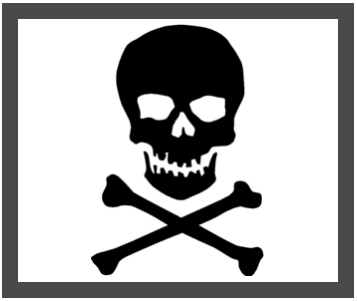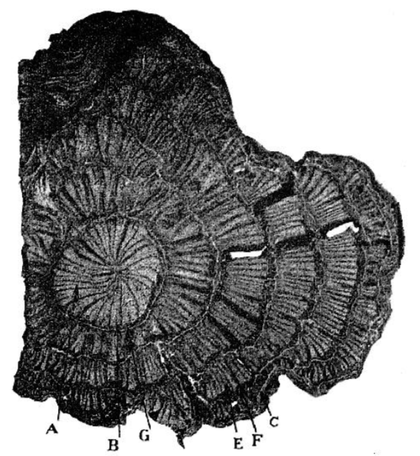Sentry Page Protection
Chondrodendron tomentosum
Bentley and Trimen, Medicinal Plants, Vol 2, 1875
Bentley and Trimen, Medicinal Plants, Vol 2, 1875
Cross-section of the root
Manual of Organic Materica Medica, Sayre, 1879
Manual of Organic Materica Medica, Sayre, 1879
Botanical name:
Chondrodendron tomentosum (syn. C. scabrum)
A number of related plants were available as varieties of Pareira
Parts used:
Root, Stem
Temperature & Taste:
Bitter, slightly Sweet. Toxic
Constituents:
Alkaloids: delta-tubocurarine, L-curarine
Chondrodendron tomentosum (syn. C. scabrum)
A number of related plants were available as varieties of Pareira
Parts used:
Root, Stem
Temperature & Taste:
Bitter, slightly Sweet. Toxic
Constituents:
Alkaloids: delta-tubocurarine, L-curarine
Uses:
1. Clears Damp, Promotes Urine:
-chronic urinary inflammations, chronic Cystitis
-Edema, Dysuria, painful urination, constant desire to urinate
-Gravel, Stones
-Rheumatism
-Jaundice
-Leukorrhea, Gonorrhea
2. Moves the Blood:
-Trauma, Bruising
-promotes Menstruation
3. Settles Wind, Stops Spasms:
-Cramps, Convulsions
-Hypertension
-Tetanus
-Mental Illness, 'Madness'
4. Resists Poison:
-Snake Bite (wine infusion internally, crushed leaf topically: Brazil)
Dose:
Powder: 1–2.5 grams (1–2 scruples)
Infusion: 3–6 grams (up to 9 grams) has been taken over the course of a day.
Tincture (1:5 in 50% alcohol): 50–70 drops
Strong Tincture (8 oz. to 1 pint of 76% alcohol): 1–10 drops
Fluid Extract (1:1): 1/4 to 2 drams
Solid Extract: 650–1300mg
Comment:
1. Curare, obtained from this and related plants has been used as a paralyzing arrow poison by native South Americans.
2. Tubocurarine chloride is used as a muscle paralyser during surgery.
Substitute:
1. Stephania glabra is used synonymously in India.
2. Its Chinese name indicates a variety of Fang Ji (Stephania) suggesting Stephania tetrandra (Fang Ji) may also be used similarly.
3. Bearberry
4. Pareira may be a suitable less toxic substitute for the Birthworts.
Powder: 1–2.5 grams (1–2 scruples)
Infusion: 3–6 grams (up to 9 grams) has been taken over the course of a day.
Tincture (1:5 in 50% alcohol): 50–70 drops
Strong Tincture (8 oz. to 1 pint of 76% alcohol): 1–10 drops
Fluid Extract (1:1): 1/4 to 2 drams
Solid Extract: 650–1300mg
Comment:
1. Curare, obtained from this and related plants has been used as a paralyzing arrow poison by native South Americans.
2. Tubocurarine chloride is used as a muscle paralyser during surgery.
Substitute:
1. Stephania glabra is used synonymously in India.
2. Its Chinese name indicates a variety of Fang Ji (Stephania) suggesting Stephania tetrandra (Fang Ji) may also be used similarly.
3. Bearberry
4. Pareira may be a suitable less toxic substitute for the Birthworts.
Main Combinations:
1. Chronic Urinary inflammations, Dysuria:
i. Pareira, Buchu
ii. Pareira, Bearberry
Major Formulas:
Cautions:
1. Toxic in overdose. Its use is restricted in many countries.
2. Not used during Pregnancy
Toxicity:
1. Toxicity is especially associated to its toxic compounds entering the bloodstream. So for example, cuts or sore in the mouth can produce toxic reactions due to the toxic compounds directly entering the blood. If there is no direct route into the bloodstream it is relatively safe in therapeutic doses.
2. 'Overdoses of tubocurarine (and other curare alkaloids) can cause respiratory paralysis and hypotension'. (Duke)
3. LD50 of the alkaloids is less than 1mg/kg in mice.
Main Preparations used:
Infusion, Decoction, Tincture
Infusion of Pareira:
Pareira 3 drams
Boiling Water 1 pound
Infuse, strain. To be taken over the course of a day. (Niemann)
Decoction of Pareira:
Pareira 1 oz.
Spring Water 2 pounds
Boil to 1 pound. Dose: 3 oz., three times daily.
Tincture of Pareira:
Pareira root 1 part
Alcohol (50%) 5 parts
Dose: 50–70 drops. (Wirtemberg)
1. Toxic in overdose. Its use is restricted in many countries.
2. Not used during Pregnancy
Toxicity:
1. Toxicity is especially associated to its toxic compounds entering the bloodstream. So for example, cuts or sore in the mouth can produce toxic reactions due to the toxic compounds directly entering the blood. If there is no direct route into the bloodstream it is relatively safe in therapeutic doses.
2. 'Overdoses of tubocurarine (and other curare alkaloids) can cause respiratory paralysis and hypotension'. (Duke)
3. LD50 of the alkaloids is less than 1mg/kg in mice.
Main Preparations used:
Infusion, Decoction, Tincture
Infusion of Pareira:
Pareira 3 drams
Boiling Water 1 pound
Infuse, strain. To be taken over the course of a day. (Niemann)
Decoction of Pareira:
Pareira 1 oz.
Spring Water 2 pounds
Boil to 1 pound. Dose: 3 oz., three times daily.
Tincture of Pareira:
Pareira root 1 part
Alcohol (50%) 5 parts
Dose: 50–70 drops. (Wirtemberg)
Click the Tabs above for more information on this Medicine
'Pareira brava (Chondrodendron tomentosum) is a climbing shrub, native to Peru and Brazil. and adjacent sections of South America. The Portuguese missionaries of the seventeenth Century who visited Brazil learned of its reputed qualities from the natives, who under the name abutua or butua valued it highly for its therapeutic virtues. The Portuguese gave it the name Pareira brava, or wild vine, with reference to its mode of growth. Its reputed medicinal qualities, learned from the natives, were made conspicuous by Michel Amelot, ambassador of Louis XIV to Lisbon, who found it in that city and carried it with him to Paris. The botanist Pomet, 1694, described the plant in his "History of Drugs," Paris. After an eventful botanical record embracing considerable discussion as well as confusion with some other drugs, during which Pareira brava enjoyed professional conspicuity in Europe, it dropped from general use, the extraordinary pretensions long made for it being now practically forgotten.' (History of the vegetable drugs of the Pharmacopoeia of the United States, Lloyd, 1911)




